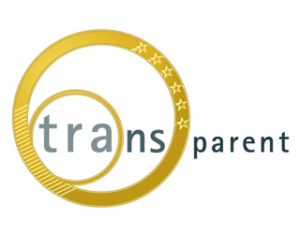Which economic activities can be called “sustainable”? Until now, there has not been a standard definition at international or European level. But now there is, or almost. The word “Taxonomy” has been bandied about a lot. Let’s take a look at its definition and what it means.
On 9 March 2020, the Final Report on the EU Taxonomy of sustainable economic activities was published, the result of over a year of work by the Technical Expert Group on Sustainable Finance (TEG) – 35 members and over 100 consultants – appointed by the European Commission to provide recommendations on the new sustainable finance regulations.
The TEG was tasked with identifying the economic activities able to contribute to and achieve the target of zero emissions by 2050 and the relative selection criteria.
The document is entitled “Taxonomy: Final report of the Technical Expert Group on Sustainable Finance”. This document, consisting of 67 pages and 600 technical annexes, seeks to classify the main economic sectors (70) based on their capacity to mitigate or adapt to climate change: those that are already environmentally sustainable (low carbon), those that pollute but cannot do otherwise and which are called upon to do as much as possible to improve (transition to a zero-emissions economy but which cannot yet be called zero carbon), and those that contribute to the other categories (enabling) which allow other activities to achieve low carbon performance or to significantly reduce their emissions. For each category, rigid criteria are established to ascertain sustainability.

EU Taxonomy: who is it for?
This “language” of environmental sustainability aims to provide a reference for the following areas.
For the responsible finance sector, in order to indicate how sustainable an investment actually is, “financial market participants offering financial products in the EU, including occupational pension providers”, specifies the report. These operators will have to provide information on how relevant the products they offer are to the taxonomy. There is a range of varying obligations depending on the product’s sustainability classification and whether it regards an entire fund or strategy, part of a fund or strategy, or is of a more general nature. For each product, from 31 December 2021 financial operators will be required to disclose to what extent their underlying investments are aligned with the Taxonomy, expressed as a percentage of the investment, fund or portfolio.
For governments, to establish incentives for green businesses. While the method has not yet been established (this will be the responsibility of the platform of the European Commission), the Taxonomy will also be the reference used to allocate European incentives. According to the Final Report, “The European Commission is considering how the Taxonomy can be applied in the climate and environmental tracking and sustainability proofing guidelines of the InvestEU Programme”.
For companies subject to the Non-Financial Reporting Directive (NFRD), publicly traded companies with over 500 employees, banks and insurance companies, to disclose their environmental impact. These will be required to provide information on their activities in reference to the Taxonomy.
EU Taxonomy: which economic activities can be defined as sustainable?
agricultural company, or a cement factory, or a construction site? What parameters do the various economic activities have to meet to be considered as having a “low environmental impact”?

The Taxonomy screening criteria
The Taxonomy considers 70 activities, from agriculture to energy production, from ICT to the manufacturing sector, from transport to construction. According to the TEG, these sectors produce 93% of the polluting emissions in Europe.
For each sector, the Taxonomy provide a series of technical screening criteria: a 600-page annex that sets out the technical thresholds that qualify an economic activity as sustainable.
Polluting sectors rewarded for improvements
The Taxonomy refers to activities that are green in any sense of the word and which help to mitigate the impact on climate change. Some of these are polluting activities that are considered necessary to the economic system, such as urban transport, electricity, and steel or cement production. According to the group of experts, these activities cannot be removed overnight simply because of their negative environmental impact. For these activities, the TEG has established criteria that demonstrate improvement.
The current EU Taxonomy contains no trace of so-called “brown” criteria, which explicitly define activities as polluting. However, the TEG experts believe that “Incorporating ‘brown’ criteria into the Taxonomy will greatly assist companies and other issuers in explaining incremental improvements in their activities and receiving some positive recognition in the market”, effectively encouraging polluters to improve their environmental performance and reduce the impact on the climate.
Even more glaring is the omission from the Taxonomy, at least at the moment, of any social criteria, one of the three key ESG factors. The Taxonomy only specifies that minimum social safeguards should be met: alignment with the OECD guidelines for multinationals and the Guiding Principles on Business and Human Rights of the United Nations.
The next steps for the EU Taxonomy to become a reality
A few more steps are needed for the EU Taxonomy to become a reality. By summer 2020, the Taxonomy Regulation will be published in the Official Journal of the European Union. The Regulation is the result of the agreement reached in December 2019 between the European Commission, the Parliament, and the Council, the so-called trilogy.
Putting the Taxonomy into operation requires the introduction of the Delegated Acts, which will be published in December 2020. The first part will contain technical screening criteria, under which only activities that contribute to two of the six objectives established by the European Commission will be considered sustainable: climate change mitigation and climate change adaptation.
Theoretically, based on the work of the TEG the Delegated Acts will be produced by a specific platform that the EU will establish between September and October 2020, the Platform on Sustainable Finance, which will take up the mantle from the TEG.
On 23 March, the EU Commission opened submissions for feedback on the Delegated Acts, closing on 20 April. And before they can be approved, the Delegated Acts have to pass the scrutiny of the individual Member States represented by the European Council. And this process is likely to be anything but straightforward.
When will the Taxonomy enter into operation?
On 31 December 2021, the first set of technical screening criteria for sustainable activities will become operational. From then on, any entity offering sustainable and responsible investments will have to indicate the percentage of their investment portfolio aligned with the Taxonomy.
The vast world of sustainable and responsible finance will therefore have one year from the publication of the Delegated Acts (December 2020) to adapt their strategies to select the businesses they include in their sustainable investment portfolios.

Germany is the first European nation to apply the Taxonomy to measure corporate sustainability
Germany has been quick to ask “Dear European companies, how sustainable are you?” The German Federal Minister for the Environment, Svenja Schulze, has posed the question to major publicly traded companies in Germany and beyond. The BMU (German Federal Ministry for the Environment) has launched a research project to assess how much the main companies listed on the stock exchange align with the Taxonomy of the EU Action Plan, the plan to fund sustainable growth launched by the European Commission in March 2018.
The minister invited almost 430 of Europe’s leading companies to participate in the sustainable finance survey. The research project funded by the BMU is the first to measure the sustainability of big businesses using the new EU Taxonomy — the language to define whether or not an activity is sustainable — which should enter into force by the end of 2020.
The survey could help define sustainable post COVID-19 economic recovery programmes. “To overcome the current crisis, we need a sustainable, environmentally conscious economic recovery,” stated Minister Schulze. “The European Taxonomy on Sustainable Finance provides the first guideline on what sustainability actually means in the context of economic activities,” she added. “Companies that invest in renewable energy, green mobility and industrial processes that protect the environment support a green economy, innovation and job creation that are essential for our future. We intend to promote these investments. And to do this, we need to know where we are in terms of sustainability”.
The survey was launched on 13 May and will continue until 9 June. It aims to strengthen awareness among businesses and banks on the need to develop the capacities required by the EU Taxonomy, to demonstrate the extent to which corporate activities already correspond to this framework and to highlight the challenges and solutions for future development. For example, financial undertakings will be required to indicate the extent to which their products are aligned with the Taxonomy and which funding options support climate change mitigation or adaptation.
Please read the legal notes





